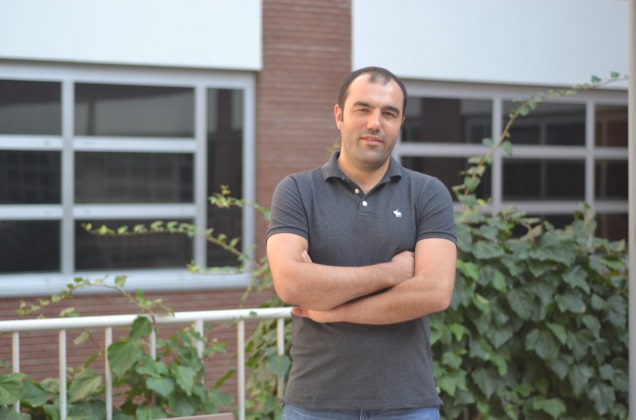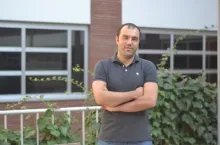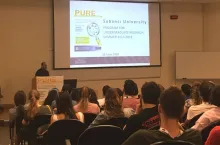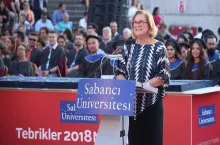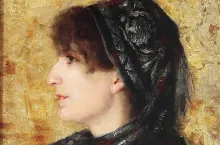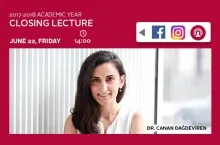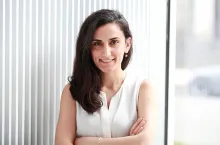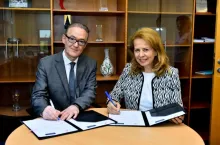Sabancı University Founding Chairman of the Board of Trustees Güler Sabancı speaking at the Sabancı University Commencement Ceremony:
- I stand with my optimism that the coming years will be better for democracy and human rights both in Turkey and the world.
- Remember that being solution-oriented, constructive and open to cooperation, and able to function in a team will be your greatest competitive advantages in the future.
- Your ability to improve and renew yourselves will be key to your success and happiness.
1200 students from 26 countries received their graduate and undergraduate degrees at the Sabancı University Commencement Ceremony.
On Friday, June 22nd, 2018, Sabancı University held the commencement ceremony for its 19th graduate and 16th undergraduate classes. Graduates received their diplomas at a ceremony on the Sabancı University campus.
The top ranking students of the three faculties also received their awards. Winners were Mehmet Oğuz Gök in the Faculty of Engineering and Natural Sciences, Ebrar Nefes in the Faculty of Arts and Social Sciences, and Alexander Gruber in the School of Management. Among Sabancı University graduates this year were students from 26 countries.
Speaking in the ceremony were Sabancı University Founding Chairman of the Board of Trustees Güler Sabancı and President Zehra Sayers as well as Ebru Demir on behalf of graduate students, Selin Onat on behalf of undergraduate students, and Sabancı University Alumni Association President Zeynep Bahar Çelik.
“Sabancı University is an organization that is consistently on international rankings”
Founding Chairman of the Board of Trustees Chair Güler Sabancı began by thanking the Sabancı Foundation. She also remembered Sadıka Sabancı, who bequeathed her estate in 1974 to start the Sabancı Foundation, on the occasion of the 30th year of her passing.
Güler Sabancı expressed her gratitude in Sakıp Sabancı, the Honorary Chairman of Sabancı University, for pursuing his vision that Turkey's ascent to the civilized world would be at the hands of a well-raised, well-educated youth and founding the university.
Güler Sabancı added that they had set out to build a "global university" and create a globally-recognized, respected and accepted academic institution. She emphasized that Sabancı University was an organization that is consistently on international rankings.
“I am confident that the Sakıp Sabancı Center for Turkish Studies will be a point of reference for Turkish Studies across the world”
According to Güler Sabancı, a significant output of that vision was the Columbia University Sakıp Sabancı Center for Turkish Studies, an excellent match for its namesake, inugurated in New York this year. Güler Sabancı said, “I am confident that the Sakıp Sabancı Center for Turkish Studies will be a point of reference for Turkish Studies across the world with the support of the Faculty of Arts and Social Sciences."
Addressing graduates, Güler Sabancı remarked, "You have been equipped with the competencies you need to become true 'global citizens'. You have the skills and capability to adapt and thrive wherever you go once you leave today."
Güler Sabancı noted the difference between the world of 1978, when she graduated from university, and the world today. Sabancı continued: "We have witnessed and continue to witness one of the most rapid transformations in human history with technology. We are discussing citizenship for robots, space colonies, 3D-printed human tissue. This is Industry 4.0, a historical turning point."
"I stand with my optimism that the years to come will be better for democracy and human rights both in Turkey and the world."
Referring to issues that awaited resolution in Turkey and the world, Güler Sabancı said that while schooling rates increased, there were yet problems to be overcome in education systems.
Although fewer people died in wars, the effects of those wars were profoundly felt elsewhere, said Güler Sabancı, pointing out dangerous inclinations such as "disrespect for different views", "exclusion of others" and "increased intolerance" both in Turkey and worldwide. Güler Sabancı continued, “But we know that such 'regressions' in history are temporary. I stand with my optimism that the years to come will be better for democracy and human rights both in Turkey and the world. That is because I trust you and the education you have received!"
She reminded the audience that Sabancı University graduates not only received education in a scientific area or a profession, but were also raised to be youths who:
- Adopt universal values such as human rights, equality and rule of law,
- Challenge and question issues,
- Believe in the power of knowledge and science,
- Are "Free in mind, thought and conscience" as Atatürk always wanted.
No robot or artificial intelligence has been able to replace human consciousness
Güler Sabancı said that while there were intelligent robots to do a multitude of tasks, one step ahead of those robots were human beings who are thoroughly knowledgeable, use data to decide, know how to challenge, dream for a better future, and most importantly, have consciousness, conscience and emotions.
Saying that sentience and the ability to manage feelings were the primary factor in differentiating humans from other life forms, Sabancı noted that no robot or artificial intelligence has been able to replace human consciousness.
Words of advice by Güler Sabancı to graduates
Güler Sabancı gave the following advice to graduates:
- In an age when humanoid robots are being built, you must (absolutely!) avoid becoming roboticized humans.
- Make your feelings an integral part of your thinking and reasoning.
- Be aware of your emotions and work on how to manage them.
- solution-oriented,
- constructive and open to cooperation,
- and able to function in a team will be your greatest competitive advantages in the future."
You will enjoy lifelong learning and renewing yourselves
Güler Sabancı said that technology would enable many of them to live to be 100 years old, suggesting that they prepare for it and make long-term plans. Claiming that they would change between not only employers but business sectors as well, Sabancı said that they would have to learn new specialties for which they were never trained, continuing: "By doing so, you will enjoy lifelong learning and renewing yourselves. Your ability to improve and renew yourselves will be key to your success and happiness. So I recommend that you don't forget about your university and keep in contact."
Continuing her advice to graduates, Güler Sabancı said that people could only be happy and successful in jobs that they like and find meaningful. “A journey can only be pleasant and take you where you want if you put passion and significance into it" continued Sabancı, and concluded:
- First and foremost, know yourself well.
- Put your heart into whatever you do.
- Concentrate and persevere.
- Make your best effort and hang on all along,
- Except, be brave enough to choose new paths after you put your mind, reasoning and capabilities to work.
- I believe that you will do your best and make a difference wherever you work and whatever job you do.
Two reminders from the president
Sabancı University President Zehra Sayers began by saying that people and institutions had to have solid foundations and a determined, disciplined approach to be able to follow the path they set for themselves. Sayers discussed the new strategic plan and the various organizational and academic changes that followed.

Zehra Sayers continued, “We have been pioneers since we were founded, and our recent strategic plan is full of innovations for our institution. As ever, we were proud of the national and international achievements of our graduates and students."
Zehra Sayers said that Sabancı University graduates thrived and generated value all across the world from North America to Asia, and gave two pieces of advice to graduates:
Do not fear failure or mistakes. As long as you don't hurt someone deliberately and try to put yourselves in others' shoes and try to understand them, you can quickly overcome your mistakes.
Confronting failure and being honest to ourselves creates valuable experiences.
Experiences that we learn from. Once we rise from where we have fallen, we feel stronger and better aware.
Secondly, don't be afraid to take risks. You will need to take them to reach your dreams. Have confidence in yourself and what you have. By taking risks, you can transform uncertainty into opportunity. At this point I need to quote Facebook founder Mark Zuckerberg: 'The biggest risk is not taking any risk. In a world that's changing really quickly, the only strategy that is guaranteed to fail is not taking risks."
Hat-tossing was followed by live music and dance shows by Ayhan Sicimoğlu. Sabancı University Founding Chairman of the Board of Trustees Güler Sabancı joined the dance to share the excitement of graduation with the students.
